10 books about Academic Library
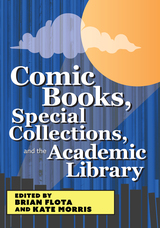
Comic Books, Special Collections, and the Academic Library
Brian Flota
Assoc of College & Research Libraries, 2023
Comic book properties continue to dominate popular culture, and there has been continued growth in the academic field of Comics Studies. Graphic novels and comic trade paperbacks populate the shelves of many academic libraries. Single issue collections of “floppy” comic books, however, tend to find their home in special collections libraries because their flimsy construction, highly acidic paper, and, occasionally, the scarcity of certain specific issues warrants special storage and handling. Thoughtful consideration must go into any decision to begin or sustain these collections.
Comic Books, Special Collections, and the Academic Library collects best practices for the acquisition, preservation, storage, and cataloging of comics, particularly single-issue (or floppy) comics, within the special collections units of academic library collections. Four sections answer:
Comic Books, Special Collections, and the Academic Library collects best practices for the acquisition, preservation, storage, and cataloging of comics, particularly single-issue (or floppy) comics, within the special collections units of academic library collections. Four sections answer:
- Why Should Your Institution Collect Comics?
- Your Library Collects or Wants to Collect Comics. Now What?
- How Do You Engage in Library Instruction and Outreach with Your Comics Collection?
- How Can Comics Be Used as Primary and Secondary Source Material by Students and Faculty?
[more]
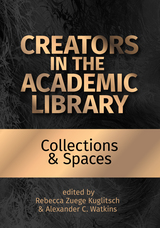
Creators in the Academic Library
Collections and Spaces
Rebecca Zuege Kuglitsch
Assoc of College & Research Libraries, 2023
Engineering students, designers, studio artists, and other student creators have unique research needs that libraries are well-positioned to meet. They use academic literature to inspire and ground creation, but also seek information from trade literature, patents, technical standards, and how-to manuals. They apply tacit knowledge and need to learn not only how to write within academic discourse but also create objects, designs, and experiences.
In four parts, Creators in the Academic Library: Collections and Spaces explores how academic libraries can build collections, spaces, and communities that serve creators.
In four parts, Creators in the Academic Library: Collections and Spaces explores how academic libraries can build collections, spaces, and communities that serve creators.
- Tailoring Collections for Creators
- Making in the Academic Library
- Creating Experiences in the Library
- Cultivating Creator Communities
[more]
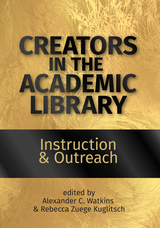
Creators in the Academic Library
Instruction and Outreach
Alexander C. Watkins
Assoc of College & Research Libraries, 2023
Engineering students, designers, studio artists, and other student creators have unique research needs that libraries are well-positioned to meet. They use academic literature to inspire and ground creation, but also seek information from trade literature, patents, technical standards, and how-to manuals. They apply tacit knowledge and need to learn not only how to write within academic discourse but also create objects, designs, and experiences.
In four parts, Creators in the Academic Library: Instruction and Outreach explores how to teach specifically for creator research, motivate learning, and deepen students’ understanding of their own practice.
In four parts, Creators in the Academic Library: Instruction and Outreach explores how to teach specifically for creator research, motivate learning, and deepen students’ understanding of their own practice.
- Technology, Tools, and Techniques for Creation
- Inspiring Creativity through Research
- Creator’s Unique Information Needs
- Grounding Creation in Research
[more]
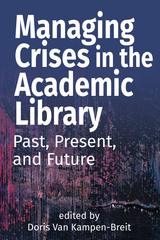
Managing Crises in the Academic Library
Past, Present, and Future
Doris Van Kampen-Breit
Assoc of College & Research Libraries, 2023
When a crisis occurs, it is the employees who determine an organization’s resiliency and effectiveness. It is their response, ability to plan for contingencies, and capacity for creating solutions that means the difference between organizational success and failure.
In 29 chapters from authors in all institution types and sizes, Managing Crises in the Academic Library can help library workers learn from the crises of the past and prepare for the next unexpected event. Chapters cover lessons from the COVID-19 pandemic, perpetual budget uncertainty, dealing with downsizing, merging departments, mold mitigation, and mental health issues, but also offer strategies applicable during any crisis, including:
Libraries and library workers are deeply sustaining lifelines for many students and faculty. Managing Crises in the Academic Library collects stories that demonstrate the tenacity, creativity, and ingenuity of academic library workers as they maintain this vital community lifeline and offers actionable ideas and approaches for planning for and sustaining the resources, services, and people in the library during difficult times.
In 29 chapters from authors in all institution types and sizes, Managing Crises in the Academic Library can help library workers learn from the crises of the past and prepare for the next unexpected event. Chapters cover lessons from the COVID-19 pandemic, perpetual budget uncertainty, dealing with downsizing, merging departments, mold mitigation, and mental health issues, but also offer strategies applicable during any crisis, including:
- Responsive decision-making in academic library collections
- Managing stakeholder expectations
- Effective communication strategies
- Continuity of operations planning
- Utilizing library storage facilities
- Documentation and cross-training
- Mediating student technology needs
- Setting boundaries
Libraries and library workers are deeply sustaining lifelines for many students and faculty. Managing Crises in the Academic Library collects stories that demonstrate the tenacity, creativity, and ingenuity of academic library workers as they maintain this vital community lifeline and offers actionable ideas and approaches for planning for and sustaining the resources, services, and people in the library during difficult times.
[more]

Mentoring and Managing Students in the Academic Library
Michelle Reale
American Library Association, 2013
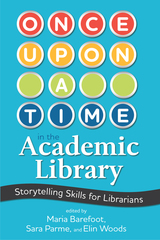
Once Upon a Time in the Academic Library
Storytelling Skills for Librarians
Maria Barefoot
American Library Association, 2022
It could be argued that to tell stories is to be human. Storytelling evolved alongside us to provide entertainment via literature, plays, and visual arts. It helps shape society through parables, moral tales, and religion. Storytelling plays a role in business, law, medicine, and education in modern society.
Academic librarians can apply storytelling in the same way that teachers, entertainers, lawyers, and businesspeople have done for centuries, as education within information literacy instruction and as communication in the areas of reference, outreach, management, assessment, and more. Once Upon a Time in the Academic Library explores applications of storytelling across academic librarianship in three sections:
Academic librarians can apply storytelling in the same way that teachers, entertainers, lawyers, and businesspeople have done for centuries, as education within information literacy instruction and as communication in the areas of reference, outreach, management, assessment, and more. Once Upon a Time in the Academic Library explores applications of storytelling across academic librarianship in three sections:
- The Information Literacy Classroom
- The Stacks
- Physical and Virtual Library Spaces
[more]

Reviewing The Academic Library
A Guide To Self-Study And Ex
Eleanor Mitchell
Assoc of College & Research Libraries, 2015

Reviewing the Academic Library
A Guide to Self-Study and External Review
Eleanor Mitchell
Assoc of College & Research Libraries, 2015

Supporting Student Parents in the Academic Library
Designing Spaces, Policies, and Services
Kelsey Keyes
Assoc of College & Research Libraries, 2024
Student parents are a socioeconomically, racially, and financially diverse group. What they have in common is the drive to work hard to overcome steep barriers in obtaining a college education.
Supporting Student Parents in the Academic Library: Designing Spaces, Policies, and Services is part toolkit, part treatise, and part call to action. In four parts:
Student parents can feel unwelcome and invisible in their institutions. And for every student parent who is struggling to complete an education despite these hurdles, there are many others who have not been able to find a way. Supporting Student Parents is a guide to engaging with and aiding the student parents in your libraries and leading the charge in making your institutions more family friendly.
Supporting Student Parents in the Academic Library: Designing Spaces, Policies, and Services is part toolkit, part treatise, and part call to action. In four parts:
- The Higher Education Landscape
- The Role of Academic Libraries
- Looking Outward to Community, For-Profit, and International Organizations
- Evaluating Needs and Measuring Success
Student parents can feel unwelcome and invisible in their institutions. And for every student parent who is struggling to complete an education despite these hurdles, there are many others who have not been able to find a way. Supporting Student Parents is a guide to engaging with and aiding the student parents in your libraries and leading the charge in making your institutions more family friendly.
[more]

Tablet Computers in the Academic Library
Rebecca K. Miller
American Library Association, 2014
READERS
Browse our collection.
PUBLISHERS
See BiblioVault's publisher services.
STUDENT SERVICES
Files for college accessibility offices.
UChicago Accessibility Resources
home | accessibility | search | about | contact us
BiblioVault ® 2001 - 2024
The University of Chicago Press









